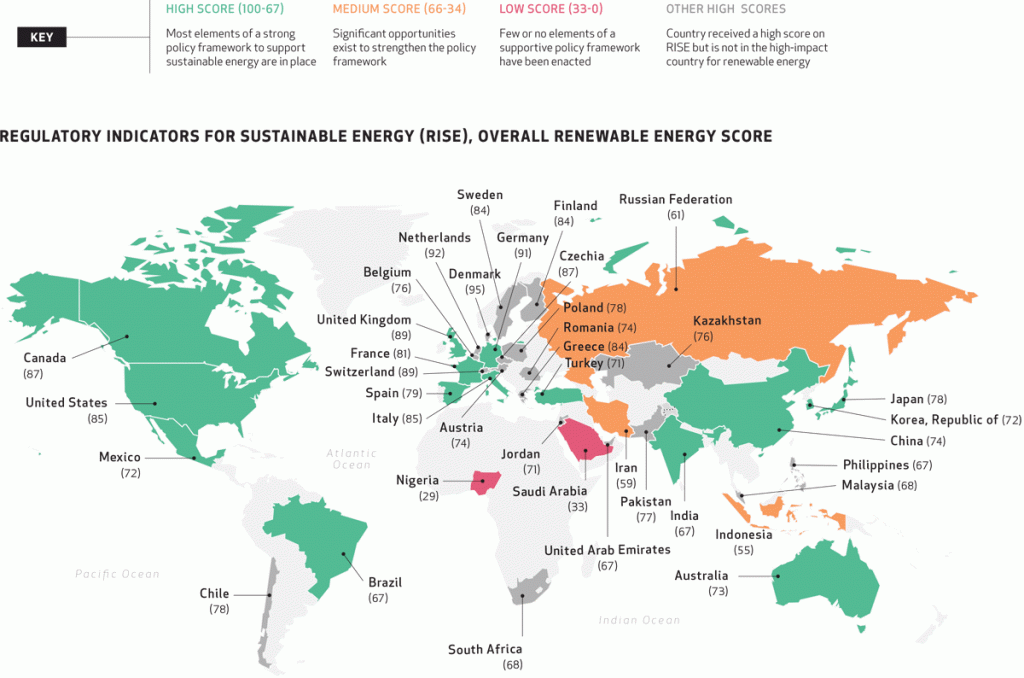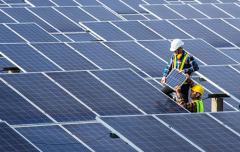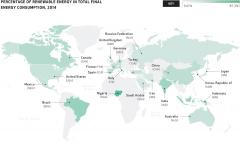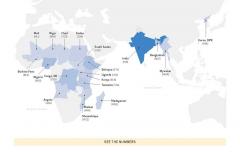Renewables: RISE Regulatory Environment

Quick Facts
Context
- RISE offers policy makers and investors detailed country-level insights on the policy and regulatory environment for sustainable energy across 111 countries globally.
- 77 percent of the 111 countries covered by RISE do not have carbon pricing and monitoring schemes in place or require mandatory reporting of greenhouse gas emissions. Where carbon pricing mechanisms are in place they almost always form part of the policy framework for renewable energy and climate action, as reflected in countries’ Nationally Determined Contributions.
NOTES: 1. Regulatory Indicators for Sustainable Energy (RISE) is a suite of indicators that assesses the legal and regulatory environment for investment in sustainable energy.
2. The dotted line represents approximately the Line of Control in Jammu and Kashmir by India and Pakistan. The final status of Jammu and Kashmir has not yet been agreed upon by the parties.
3. This map was produced by SEforALL. It is based on the UN Map of the World, which can be found here: http://www.un.org/Depts/Cartographic/map/profile/world.pdf. The boundaries, colors, denominations and any other information shown on this map does not imply, on the part of SEforALL, any judgment on the legal status of any territory or any endorsement or acceptance of such boundaries.
SOURCE:Regulatory Indicators for Sustainable Energy (RISE), World Bank Group, 2017. Data extracted from http://rise.esmap.org/ on 06/23/2017.
Related Heatmaps

Data analysis
16 Oct 2024

Data analysis
15 Nov 2022

Data analysis
03 Jun 2022

Data analysis
25 Jun 2017
